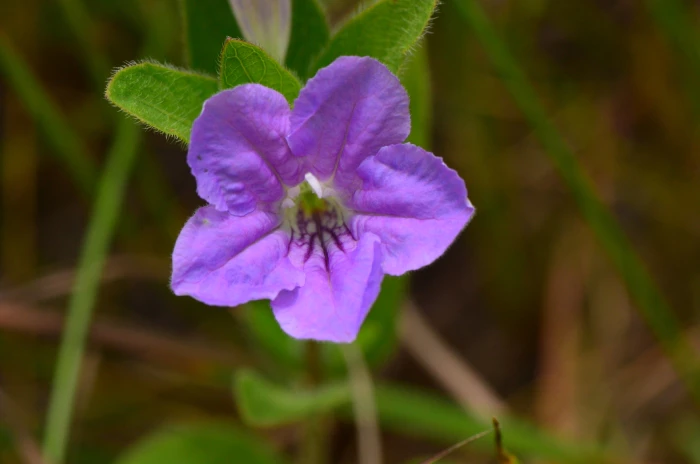Fringeleaf Wild Petunia
(Ruellia humilis)
Fringeleaf Wild Petunia (Ruellia humilis)
/
/

Joshua Mayer
CC BY-SA 2.0




















































Estimated Native Range
Climate Requirements for Ann Arbor, Michigan
| This Plant | Your Site | Plant Suitability for Your Location | ||
|---|---|---|---|---|
| • Precipitation | 11" - 81" | 34" | Your precipitation may be insufficient for this plant. Irrigate N" / year. | Irrigate N" / year |
| • High Temp. | 64°F - 98°F | 83°F | Your summer temperatures are normal for this plant. | Excellent |
| • Low Temp. | 1°F - 69°F | 16°F | Your winter temperatures are normal for this plant | Excellent |
Summary
Fringeleaf Wild Petunia is valued for its drought tolerance and ability to thrive in a variety of soil conditions, making it an excellent choice for low-maintenance gardens. Its increasing popularity in native plant gardens is due to its attractive flowers and the growing interest in sustainable landscaping. It is suitable for border plantings, naturalized areas, and as a ground cover. This species prefers full sun to part shade and can adapt to a range of soil drainage conditions, from fast to slow. While it is not commonly found in conventional nurseries, its use is on the rise as gardeners seek to incorporate more native species into their landscapes.CC BY-SA 4.0
Plant Description
- Plant Type: Herb
- Height: 0.5-2 feet
- Width: 1.5-2 feet
- Growth Rate: Moderate
- Flower Color: Pink, Purple
- Flowering Season: Summer
- Leaf Retention: Deciduous
Growth Requirements
- Sun: Full Sun, Part Shade
- Water: Low
- Drainage: Fast, Medium, Slow
Common Uses
Bank Stabilization, Bee Garden, Bird Garden, Butterfly Garden, Drought Tolerant, Groundcover, Hummingbird Garden, Low Maintenance, Rock Garden, Showy Flowers, Street Planting
Natural Habitat
Native to open woodlands, grasslands, and savannas in the East-Central United States
Other Names
Common Names: Fringe-Leaf Ruellia , Low Wild Petunia , Hairy Petunia , Low Ruellia
Scientific Names: Ruellia humilis , Ruellia humilis var. humilis , Ruellia humilis var. longiflora , Ruellia humilis var. expansa , Ruellia humilis var. depauperata , Ruellia humilis var. frondosa , Ruellia humilis var. calvescens , Ruellia ciliosa var. humilis , Ruellia ciliosa var. longiflora , Ruellia caroliniensis f. alba
GBIF Accepted Name: Ruellia humilis Nutt.